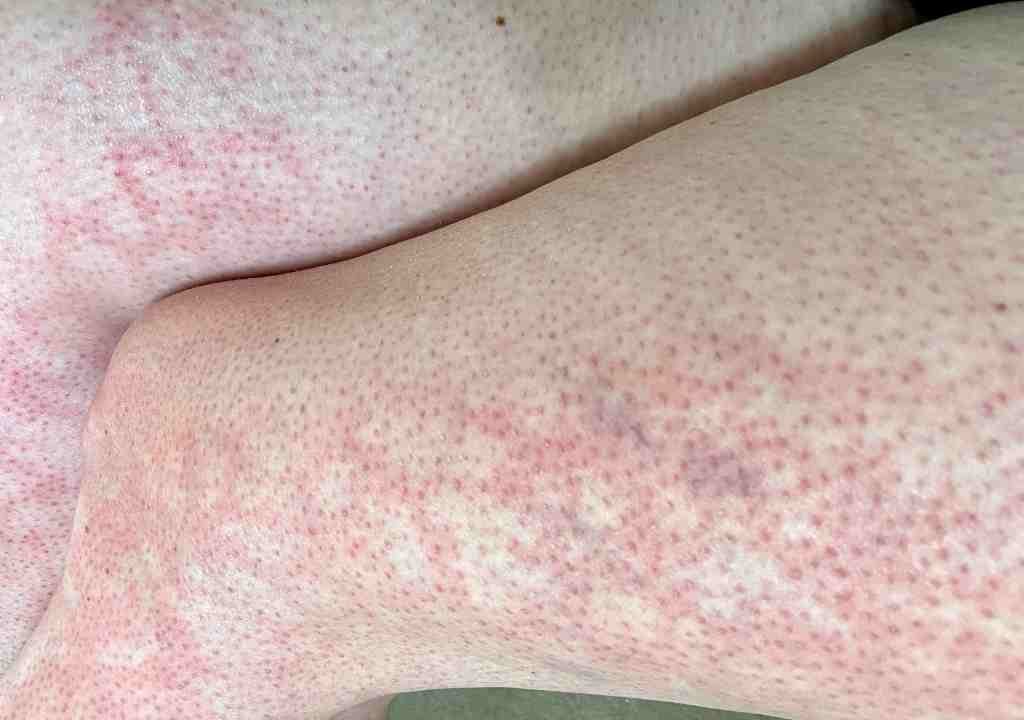As winter makes its entrance, bringing with it the biting cold that can be brutal on your skin, many individuals are gearing up to modify their skincare routines. In the quest for protection against the harsh, dry Winter Wind, people often turn to richer creams, ointments, and balms. While magazines and beauty blogs primarily focus on showcasing winter skincare essentials in the form of products, there is a critical aspect that often goes unnoticed – the toasted skin syndrome treatment. In this comprehensive article, we will explore the nuances of this condition, its proper name – Erythema ab igne, and discuss effective treatments to safeguard your skin during the winter months.
The Danger of Toasted Skin Syndrome:
Table of Contents
Toasted Skin Syndrome, colloquially known as Erythema ab igne, is a condition that can arise from the seemingly harmless use of heating pads and heated blankets during the winter. It begins as a patch of redness at the site where the heat source is applied, resembling a net. What sets it apart is the tendency for this redness to persist and become hyperpigmented, sometimes accompanied by blisters and dilated blood vessels with chronic exposure. This condition is the result of prolonged exposure to sub-threshold levels of infrared radiation, which is high enough to damage the skin but not quite high enough to cause burns.
Understanding the Damage:
To grasp the impact of Toasted Skin Syndrome, it’s essential to delve into the layers of the skin where the damage occurs. The junction between the epidermis and dermis gets flattened, leading to the degeneration of basal keratinocytes. This degeneration is accompanied by thinning of the dermis, collagen, and elastin – the components that provide a supportive framework for the skin. The redness observed in the initial stages blanches upon pressing, reflecting the damage to the underlying blood vessels. Importantly, this redness typically resolves within a couple of hours after discontinuing the heat source. Despite its potential severity, the condition is often asymptomatic, making it particularly insidious.
Toasted Skin Syndrome Treatment and Prevention:

Toasted Skin Syndrome Treatment is surprisingly straightforward – cease the application of the heat source. In most cases, once the heat source is removed, the redness and hyperpigmentation will gradually subside over the course of a few weeks. However, in cases where the condition has been persistent over an extended period, it may become more stubborn, requiring additional intervention. Hydroquinone, a skin-lightening agent, can be beneficial in fading persistent hyperpigmentation, particularly for individuals with deeper skin tones. The key is early recognition and prompt discontinuation of the heat source.
Best Cream for Toasted Skin Syndrome
Exploring the benefits of tretinoin and retinol, well-known for their skin renewal properties, revealed potential effectiveness in fading the scaly appearance induced by toasted skin syndrome. However, a dermatologist’s consultation is paramount before incorporating these into one’s skincare routine.
Long-term Risks and Skin Cancer:
Beyond the immediate effects, Toasted Skin Syndrome poses long-term risks, particularly concerning the development of skin cancers. Squamous cell carcinoma, a common type of skin cancer usually associated with sun exposure, can arise in the areas affected by Erythema ab igne. While the manifestation of skin cancer might take several years, monitoring by a healthcare provider becomes crucial for individuals experiencing persistent symptoms. Moreover, rarer types of skin cancers, including marginal cell lymphoma and Merkel cell carcinoma, have been reported in association with Toasted Skin Syndrome.
Beyond Winter: Other Causes of Toasted Skin Syndrome:
While the focus often revolves around winter and the use of heating devices, it’s essential to recognize that Toasted Skin Syndrome can result from various heat sources beyond the winter months. Laptops, heated car seats, moxibustion, and even carrying hot items in pockets pose potential risks. Certain occupations, such as metal foundry workers, bakers, and those working in fast-food establishments, face a heightened risk due to their proximity to heat sources. Awareness of these potential sources is crucial for preventing Toasted Skin Syndrome year-round.
Toasted Skin Syndrome can also be caused by Hot water bottles that female often use to get relieve from Period Cramps.
In conclusion, understanding and effectively treating Toasted Skin Syndrome is paramount for maintaining optimal skin health, especially during the winter months. This article serves as a comprehensive guide, shedding light on the intricacies of the condition, potential treatments, and long-term risks. As you navigate the winter season, take extra caution when using heating pads and similar devices to stay warm. If you found this information valuable, consider sharing it with friends and loved ones. Remember, subscribing for more skincare insights is a proactive step towards prioritizing your skin’s well-being. Protect your skin not just this winter but throughout the year, and let it radiate health and resilience.



